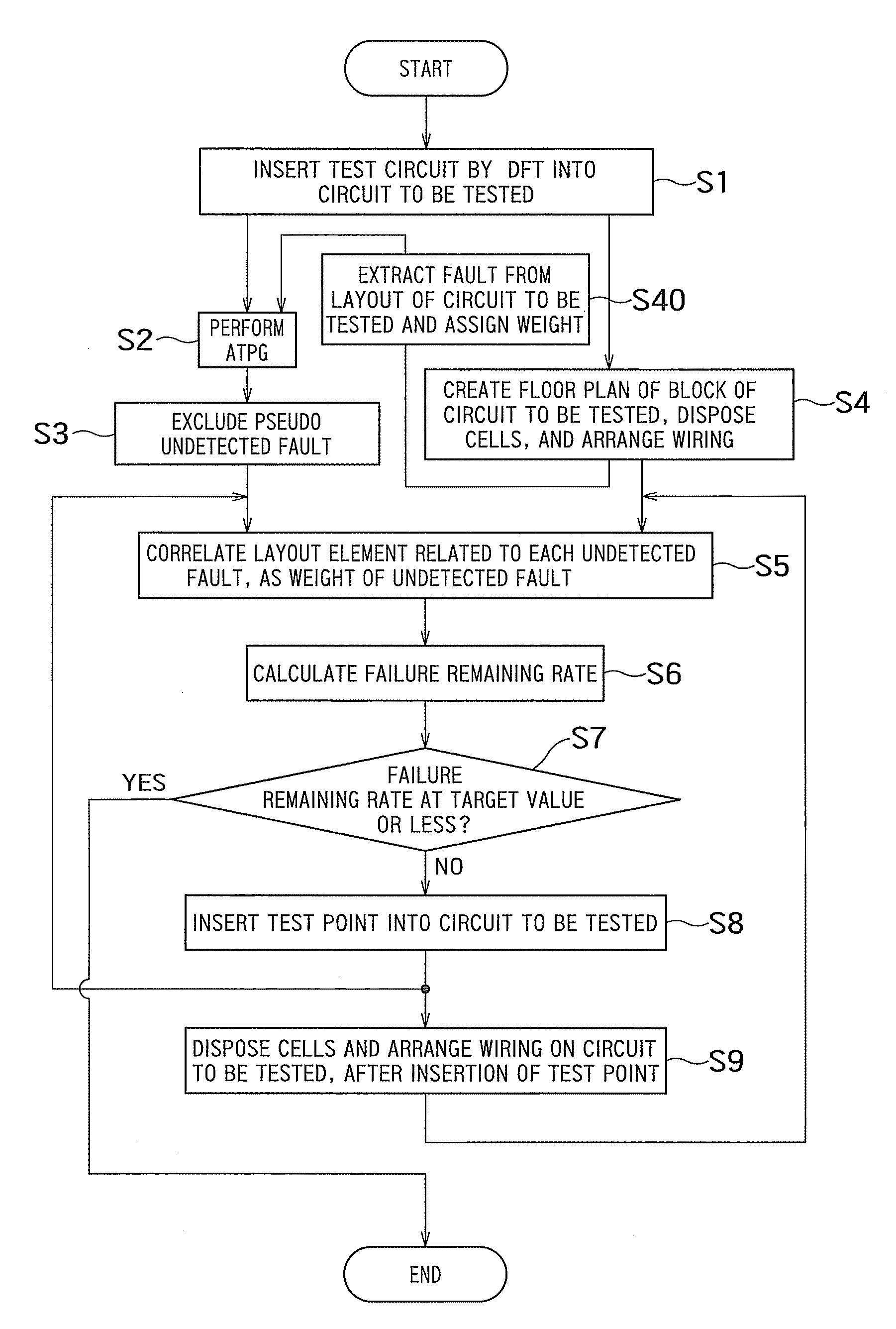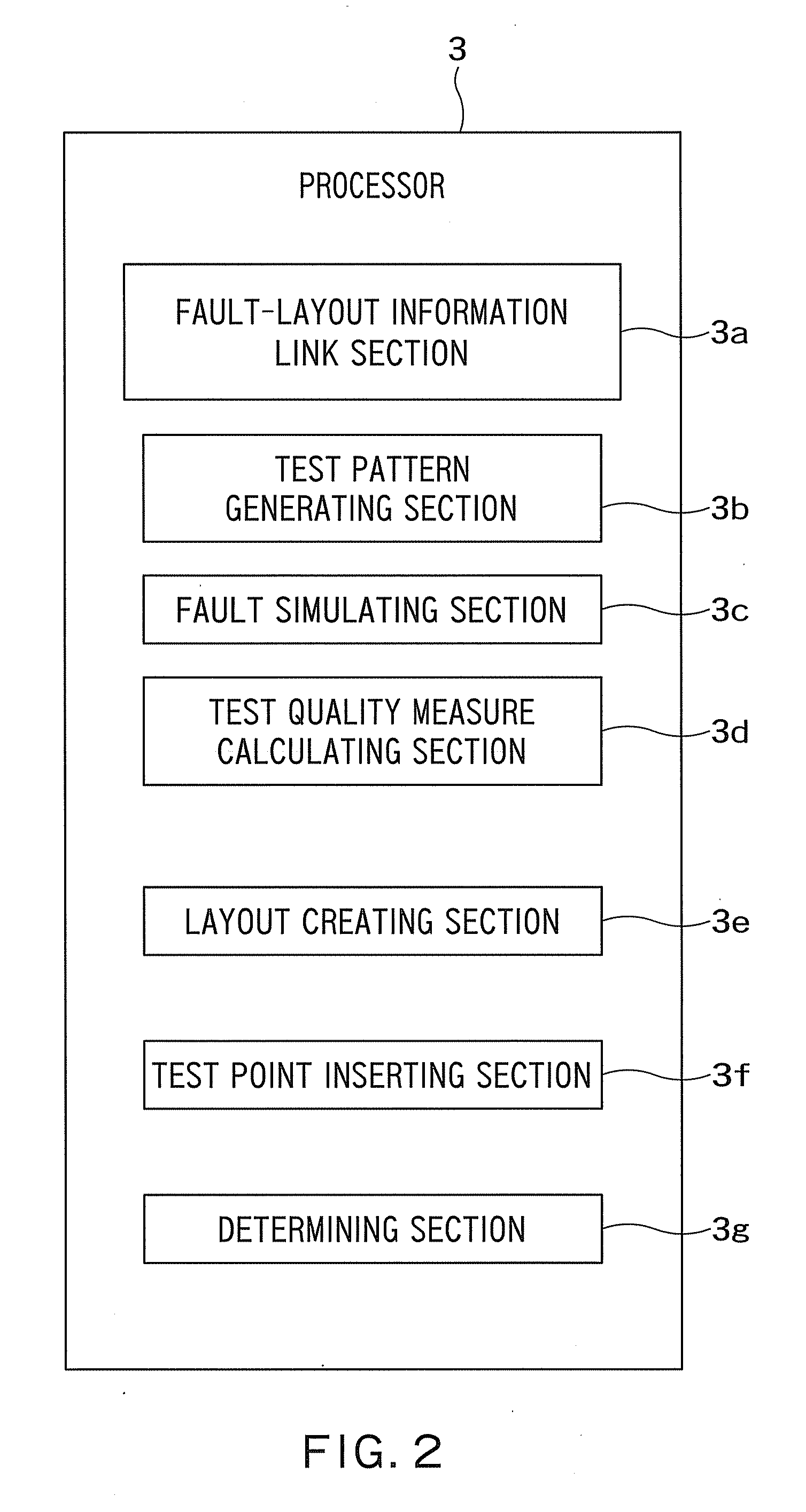Test quality evaluating and improving system for semiconductor integrated circuit and test quality evaluation and improvement method for semiconductor integrated circuit
a technology of integrated circuits and test quality, applied in the direction of instruments, analogue processes for specific applications, electric/magnetic computing, etc., can solve the problems of increasing resources and patterns, and affecting the quality of test results
- Summary
- Abstract
- Description
- Claims
- Application Information
AI Technical Summary
Benefits of technology
Problems solved by technology
Method used
Image
Examples
first embodiment
[0060]FIG. 1 is a block diagram showing the configuration of a test quality evaluating and improving system 100 for a semiconductor integrated circuit according to a first embodiment which is an aspect of the present invention. FIG. 2 is a block diagram showing an example of the configuration of a processor 3 in the test quality evaluating and improving system 100 provided for a semiconductor integrated circuit and shown in FIG. 1. FIG. 3 is a block diagram showing an example of the configuration of a data storage device 4 in the test quality evaluating and improving system 100 provided for a semiconductor integrated circuit and shown in FIG. 1.
[0061]As shown in FIG. 1, the test quality evaluating and improving system 100 for a semiconductor integrated circuit includes an input part 1, an output part 2, the processor 3, and the data storage device 4.
[0062]The input part 1 includes, for example, a keyboard, a mouse, and a recognition device such as an optical character reader (OCR), ...
second embodiment
[0163]In the first embodiment, failures are judged to be detected in each fault model by using a plurality of fault models capable of covering various failure modes of the LSI and the accuracy of actually detecting the failures is considered in the calculation of a test quality measure (failure remaining rate).
[0164]Thus the first embodiment is effective for achieving high test quality. In reality, however, it is not always easy to define the fault models for all the failure modes and develop a test pattern generation tool. In many cases, failures are handled by limited ones of the fault models.
[0165]In this case, for example, even when a failure is judged to be “detected” in a test based on a certain fault model (generally a stuck-at fault model), failures of other fault models may not be actually detected. Thus in order to improve the accuracy of correlation between a failure remaining rate and a return rate and so on, it is necessary to precisely estimate the failures having not ...
PUM
 Login to View More
Login to View More Abstract
Description
Claims
Application Information
 Login to View More
Login to View More - R&D
- Intellectual Property
- Life Sciences
- Materials
- Tech Scout
- Unparalleled Data Quality
- Higher Quality Content
- 60% Fewer Hallucinations
Browse by: Latest US Patents, China's latest patents, Technical Efficacy Thesaurus, Application Domain, Technology Topic, Popular Technical Reports.
© 2025 PatSnap. All rights reserved.Legal|Privacy policy|Modern Slavery Act Transparency Statement|Sitemap|About US| Contact US: help@patsnap.com



